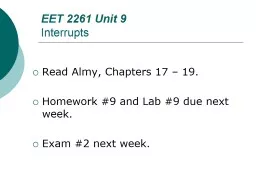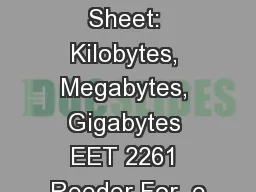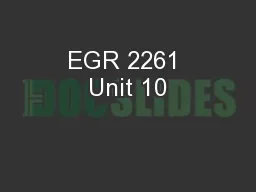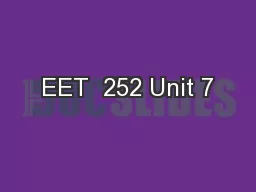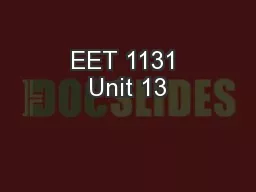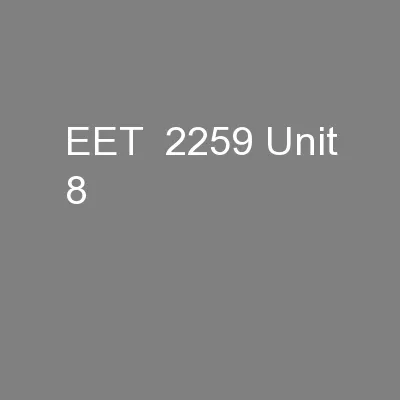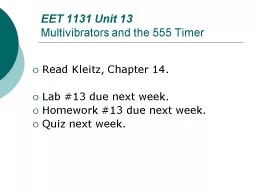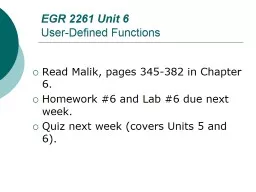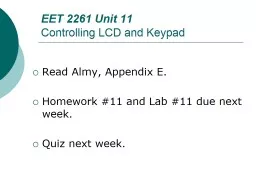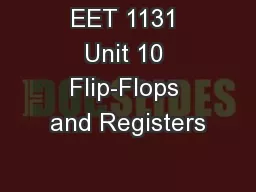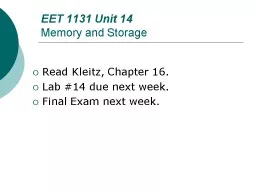PPT-EET 2261 Unit 9
Author : myesha-ticknor | Published Date : 2017-12-08
Interrupts Read Almy Chapters 17 19 Homework 9 and Lab 9 due next week Exam 2 next week An interrupt is a mechanism for causing a program to temporarily
Presentation Embed Code
Download Presentation
Download Presentation The PPT/PDF document "EET 2261 Unit 9" is the property of its rightful owner. Permission is granted to download and print the materials on this website for personal, non-commercial use only, and to display it on your personal computer provided you do not modify the materials and that you retain all copyright notices contained in the materials. By downloading content from our website, you accept the terms of this agreement.
EET 2261 Unit 9: Transcript
Download Rules Of Document
"EET 2261 Unit 9"The content belongs to its owner. You may download and print it for personal use, without modification, and keep all copyright notices. By downloading, you agree to these terms.
Related Documents

